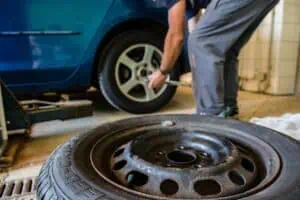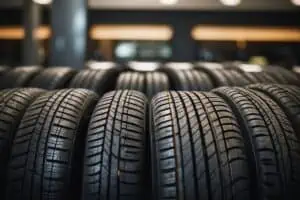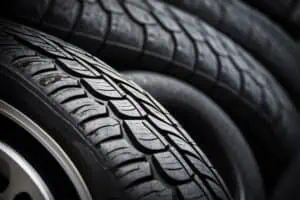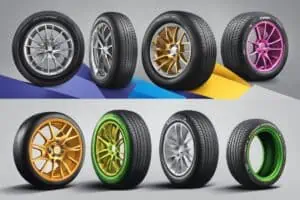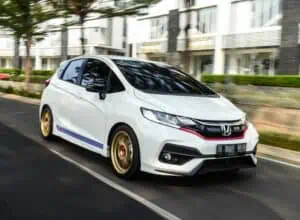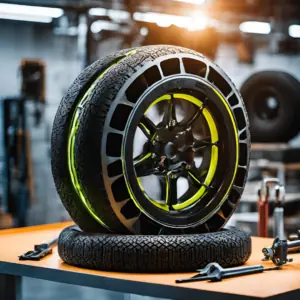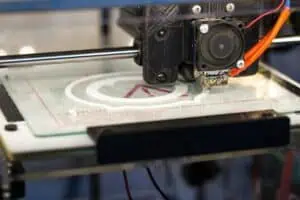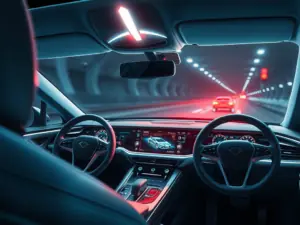Seatbelts save approximately 15,000 lives in the United States each year, yet today’s automatic seatbelts represent far more than just a safety strap across your body. These life-saving devices have evolved from simple manual belts to sophisticated systems that actively protect vehicle occupants.
The journey of seatbelt technology showcases remarkable advancement in automotive safety. Starting with basic two-point lap belts, automatic seatbelts now incorporate advanced features like pre-tensioners, load limiters, and smart sensors that work together with other vehicle safety systems. These innovations have significantly improved passenger protection during collisions while making seatbelt usage more convenient and effective.
This quick overview explores the current state of smart seatbelt technology, examines its integration with modern vehicle safety systems, and looks ahead to future innovations that promise even greater protection for drivers and passengers alike.
Current Smart Seatbelt Technologies
Modern vehicles feature several innovative seatbelt technologies that go far beyond the basic restraints of yesterday. These advancements actively work to protect occupants through intelligent mechanisms that respond to crash conditions and human behavior.
Pre-tensioners and Load Limiters
Pre-tensioners represent a critical advancement in seatbelt safety, functioning by instantly retracting the belt upon crash detection. This technology removes excess slack, positioning occupants properly before the full impact occurs. First introduced by Mercedes-Benz in their S-class cars in 1981, pretensioners have become standard safety equipment across the automotive industry [1].
Working alongside pretensioners, load limiters allow seatbelts to “give” slightly when forces exceed a predetermined threshold. This controlled yield prevents the shoulder belt from exerting excessive force on an occupant’s chest during a collision. Volvo pioneered this technology in their 850 series in 1995 [1].
The effectiveness of these technologies is substantial. In passenger cars, CUVs, and minivans, belted drivers and front-seat passengers experience a 12.8% lower fatality risk when using seatbelts equipped with both pretensioners and load limiters compared to conventional belts [1]. Furthermore, studies show these systems provide significant protection in various crash scenarios:
- Frontal impacts (primary benefit)
- Side impacts (secondary protection)
- Rollovers (additional safeguard)
- Oblique-frontal crashes (effective despite initial concerns)
By 2008, all new vehicles sold in the United States came equipped with pretensioners and load limiters for both driver and front passenger positions [1].
Seatbelt Reminder Systems
Seatbelt reminder systems use visual and audible alerts to encourage buckling up. These systems have proven remarkably effective—approximately 80% of unbuckled passengers decide to fasten their seatbelts once the audio-visual warning activates [2].
The U.S. Department of Transportation recently finalized requirements that will enhance these systems. Starting September 2026, manufacturers must implement improved front seat warnings, followed by mandatory rear seat reminder systems by September 2027 [3]. This rule amendment to Federal Motor Vehicle Safety Standard No. 208 is expected to prevent more than 500 injuries and save about 50 lives annually once fully implemented [3].
Currently, almost all 2022 model year vehicles voluntarily provide front passenger seatbelt warnings, but only about 47% include rear seat warning systems [3].
Inflatable Seatbelts
Inflatable seatbelts incorporate miniature airbags within the belt webbing itself. Upon impact, cold compressed gas flows from a storage cylinder into the belt, causing it to inflate within 40 milliseconds [4]. This innovation distributes crash forces across five times more body area than conventional seatbelts [4].
Ford debuted this technology in the 2011 Explorer, primarily to protect vulnerable rear-seat passengers including children and elderly occupants [4]. Though slightly thicker than standard belts, the inflatable versions function similarly during normal use. However, their compatibility with child safety seats should be carefully verified, as noted in manufacturer guidelines [5].
Adjustable Upper Anchors
Adjustable upper anchors allow occupants to customize the height where the shoulder belt crosses their body. This seemingly simple feature significantly improves both comfort and safety, particularly for people of different heights.
For optimal protection, the seatbelt should run directly across the middle of the shoulder without touching the throat or neck [6]. Proper adjustment also prevents the belt from riding up during a collision, which could cause serious neck injuries or allow “submarining”—when an occupant slides under the lap portion of the belt [7].
Some newer vehicles feature smart upper anchors that automatically adjust based on occupant size, seat position, and other factors. For instance, ZF’s smart seatbelt system uses embedded sensors including the ACR8 electromechanical belt tensioner to continuously monitor and balance pressure distribution [8].
Benefits and Safety Enhancements
Smart seatbelt innovations offer remarkable protection advantages over conventional restraint systems. These advancements not only save lives but fundamentally change how vehicles safeguard occupants during collisions.
Improved Crash Protection
Recent developments in smart seatbelt systems provide adaptive protection based on occupant characteristics. ZF’s Multi-Stage Load Limiter (MSLL) technology adjusts restraining forces according to an individual’s size, weight, and body type throughout the entire crash sequence [9]. This customized approach ensures optimal protection for diverse body types rather than applying a one-size-fits-all methodology.
Smart seatbelts intervene earlier in accident scenarios, tightening around the body before impact to eliminate slack, then decelerating occupants in a controlled manner after collision [9]. Additionally, systems equipped with interior monitoring capabilities can recognize occupant positions and adapt belt forces individually based on collision severity [9].
Reduced Injury Severity
The life-saving potential of seatbelts is backed by extensive research. Studies show that properly worn seatbelts reduce the probability of being killed by 40-50% for drivers and front-seat passengers and approximately 25% for rear-seat occupants [10]. Furthermore, according to medical research, seatbelts are about 50% effective in preventing fatalities in crashes where motorists would otherwise die [10].
Beyond fatality reduction, smart seatbelt systems with adaptive technology provide notable injury mitigation benefits. National Trauma Data Bank analysis revealed:
- 67% mortality reduction with seatbelts plus airbags
- 51% mortality reduction with seatbelts alone
- 32% mortality reduction with airbags alone [11]
Enhanced Occupant Positioning
Smart seatbelt systems excel at positioning occupants properly before and during crashes. In critical situations, these systems autonomously tighten, placing occupants in optimal positions for impact and reducing injury risk [5]. Consequently, the risk of ejection—a major cause of severe injuries—is dramatically reduced, with studies showing only 5% of restrained occupants are ejected versus 44% of unrestrained occupants [10].
Special Population Benefits
Notably, smart seatbelt technology offers significant advantages for vulnerable populations. The adaptive nature of MSLL technology enhances safety for smaller individuals during moderate accidents [9]. Meanwhile, children and elderly passengers benefit from automatic sensors that adjust tension and balance pressure distribution across multiple points [12].
For elderly occupants, who may have conditions affecting mobility such as arthritis or frailty, smart seatbelts can employ load-limiting technology that activates more gradually during collisions, reducing forces exerted on their more vulnerable bodies [13]. Likewise, for children, the systems can automatically detect size and adjust tension accordingly, providing personalized protection unavailable with conventional restraints [13].
Integration with Vehicle Safety Systems
Automatic seatbelts have evolved beyond standalone safety devices into integral components of modern vehicle safety architecture. This complex integration enables enhanced protection through coordinated operation with multiple vehicle systems.
Connection with ADAS
Advanced Driver Assistance Systems (ADAS) work in tandem with smart seatbelt technology, creating an intelligent safety ecosystem. Indeed, this integration enables pre-crash positioning, where occupants are brought into ideal positions before an accident by triggering reversible restraint devices [14]. Moreover, integrated collision detection allows earlier and more reliable triggering of safety features—activating within just 25 milliseconds of impact [14].
The cooperation between these systems extends to emergency braking scenarios. For instance, pre-pretension (PPT) seatbelts combined with automated emergency braking (AEB) demonstrate significant reduction in injury metrics across different seating orientations [15]. At this point, the seatbelt can act earlier on the chest, extending the belt’s working time and reducing force on the belt [15].
Synergy with Airbag Systems
The coordinated performance of seatbelts and airbags represents a critical safety advancement. In essence, wearing a seatbelt while having an active airbag can decrease the likelihood of fatal injuries by up to 50% [1]. Automotive engineers now design these systems to communicate with one another, allowing the airbag to activate with precise timing based on seatbelt engagement [1].
Furthermore, smart restraint control algorithms integrate occupant monitoring data (weight, height, position) to optimize protection. Subsequently, this enables:
- Tailored restraint system stiffness based on occupant weight and proximity to instrument panels [7]
- Dynamic automatic suppression of airbags when occupants are too close to deployment points [7]
- Adaptation of D-ring position, belt force, and airbag stages based on occupant pose [7]
Vehicle-to-Vehicle Communication
Vehicle-to-vehicle (V2V) communication enhances seatbelt effectiveness through expanded awareness capabilities. Primarily, V2V systems transmit messages about a vehicle’s speed, heading, and brake status to nearby vehicles, with range capabilities that exceed current vehicle-resident systems—in some cases, nearly twice the range [16].
Undoubtedly, these communications can trigger pre-tensioners earlier in emergency scenarios, as the system receives warning before human perception would detect danger. V2V technology could potentially prevent over 9,300 deaths annually and reduce automotive-related fatalities by 25% [17].
Smart Seatbelts in Autonomous Vehicles
Autonomous vehicles present unique challenges for seatbelt design, especially with new interior configurations like swivel seats. Certainly, traditional safety assumptions no longer apply when occupants may face different directions or recline significantly [18].
Volvo’s innovative approach includes a safety blanket rather than conventional belts for sleeping passengers. In effect, this system uses subtle straps woven into the blanket that are “loosely attached” to the car’s structure, cocooning passengers during impacts [18].
As we approach greater automation, seatbelt systems must adapt to accommodate varied seating positions while maintaining protection. Forthwith, manufacturers are developing cocoon-like airbag concepts that surround reclining occupants and electrically powered seatbelts with sensors to detect occupant size and age [19].
Future Innovations in Seatbelt Technology
The next generation of automatic seatbelts stands poised to break new ground in automotive safety with innovations that extend far beyond today’s capabilities. Vehicle manufacturers and safety engineers are actively developing technologies that will fundamentally reshape passenger protection in the coming years.
Biometric Monitoring Capabilities
Future seatbelt systems will increasingly incorporate sophisticated biometric monitoring. Olea Sensor Networks has developed technology that embeds heart rate monitors directly into seatbelts, capable of detecting and analyzing physiological arousal through micro-Doppler radar [3]. These sensors measure heart rate and respiration patterns to evaluate driver alertness, potentially forecasting drowsiness up to 10 minutes before a driver loses consciousness [3]. Unlike eye-monitoring systems that detect drowsiness after sleep onset, these predictive biosensors can intervene before fatigue becomes dangerous [3].
Additionally, seatbelt-integrated biometric systems could monitor vital signs throughout journeys, potentially alerting emergency services during medical emergencies [2]. This capability proves especially valuable for elderly drivers or those with pre-existing health conditions.
Predictive Safety Features
AI-driven seat belt systems represent a major advancement, utilizing machine learning algorithms to analyze real-time data from vehicle sensors. These systems adaptively adjust belt tension and positioning based on occupant behavior and driving conditions [20]. Tesla has already introduced vision-based seat belt tensioning that can detect imminent collisions through camera systems before physical impact occurs [21].
Smart seatbelt technology further enhances protection through sensor-based hazard response mechanisms that preemptively adjust tension during hard braking or imminent collisions [20]. Eventually, advanced seatbelt systems will incorporate sophisticated data collection capabilities to capture and analyze crash data and occupant behavior patterns [22].
Advanced Materials Development
Material innovation forms a critical aspect of future seatbelt development. Researchers are exploring smart fabrics that monitor and respond to environmental changes, potentially adjusting tension based on crash severity [4]. Simultaneously, nanotechnology integration could enhance strength while enabling self-repairing capabilities for minor damage [4].
Environmental considerations are driving development of eco-friendly materials with lower environmental impact without compromising safety performance [4]. These advanced fibers and composites aim to provide improved occupant restraint while reducing weight and bulk [22].
Customization and Adaptability
Primarily, future seatbelts will move beyond one-size-fits-all approaches toward personalized protection. Advanced systems may incorporate sensors measuring occupant body size, weight, and position to automatically adjust tension and fit [5]. Some vehicles could even automatically sense height and weight specifications to tailor the belt accordingly [23].
This customization extends to accommodating diverse body types more effectively [2]. Multi-Stage Load Limiters (MSLL) will dynamically regulate belt tension based on impact severity, optimizing protection regardless of crash scenario [24]. Ultimately, these adaptable systems will provide enhanced safety across varying occupant sizes while maximizing comfort during normal driving conditions.
Research and Statistics
Compelling data confirms the life-saving potential of automatic seatbelts and smart restraint technologies. Extensive research demonstrates both their effectiveness and economic value across global markets.
Effectiveness Studies
Research conclusively shows that properly worn seatbelts reduce fatality risk by 45% for front-seat passenger car occupants and by 60% for light truck occupants [25]. Seatbelt use saved an estimated 14,955 lives in 2017 alone, with potential to save an additional 2,549 lives had all occupants buckled up [25]. Specifically, enhanced seatbelt reminder systems increase belt use by 3-4 percentage points over vehicles without such systems [6]. Even more impressive, vehicles with persistent auditory warnings lasting at least 90 seconds show belt use increases of approximately 30% among drivers who don’t regularly buckle up [26].
Adoption Rates
The national seatbelt use rate reached 91.2% in 2024 [25], representing significant progress. Nevertheless, approximately 50% of passenger vehicle occupants killed in 2022 were unbuckled [25]. Primarily, front seat belt usage exceeds rear seat usage, with 2022 data showing 91.6% compliance in front seats versus 81.7% in rear positions [27]. The smart seatbelt market reflects this growing adoption, valued at USD 14.5 billion in 2023 and projected to grow at a CAGR of 8.5% between 2024 and 2032 [28].
Cost-Benefit Analysis
From an economic perspective, seatbelt technologies offer substantial returns on investment. An enhanced seatbelt enforcement program costing 2 million rand was estimated to increase seatbelt usage by 16 percentage points, yielding 13.6 million rand in saved social costs—a net present value of 11.6 million rand [29]. In fact, if seatbelt use had reached 100% in 2007, an estimated 5,024 lives would have been saved [30]. Hospital cost analysis revealed significantly lower expenses among belted crash victims compared to unbelted ones, with reductions ranging from 74.1% to 95.9% depending on belt type [31].
Regulatory Influence
Governmental regulations substantially impact seatbelt technology development. Currently, 105 economies representing 5.3 billion people have strict laws on seatbelt usage [32]. Forthwith, the 2025 Federal Motor Vehicle Safety Standards will require enhanced reminder systems for all seating positions, projected to prevent over 500 injuries and save approximately 50 lives annually once fully implemented [27]. Beyond regulations, research institutes estimate potential life savings of about 1,600 lives annually through continuous, long-lasting audible reminders [26].
Real-World Applications and Examples
Leading automakers worldwide have embraced smart seatbelt technology, implementing sophisticated systems that demonstrate real impact on passenger safety. These innovations show how theoretical safety concepts translate into practical, life-saving applications.
Manufacturer Implementations
Volvo pioneered the modern three-point seatbelt in 1959 and made the patent freely available to all manufacturers, prioritizing public safety over profit [33]. Recently, ZF launched an innovative seat belt system featuring the Multi-Stage Load Limiter (MSLL) that adjusts belt force based on occupants’ size and weight [8]. Similarly, ContiTech developed smart seatbelt technology with integrated sensors that monitor occupant position, belt tension, and vital signs using advanced algorithms to optimize restraint systems [34]. In 2022, Uber implemented rear seat belt alerts in its cabs, sending audio notifications to drivers’ smartphones before trips begin [34].
Case Studies
Studies confirm the effectiveness of automatic seatbelt technologies. A 2019 NHTSA study estimated that automatic crash notification could save more than 700 lives annually if standardized in all vehicles [35]. Initially, when IIHS introduced the small overlap crash test, about 40% of vehicles scored poorly, yet within three years, 13 manufacturers had redesigned 71 vehicle models to improve performance [35]. Most importantly, advanced seatbelt designs have reduced crash fatality risk for drivers and front passengers by 12.8% in cars with front airbags [35].
Consumer Feedback
User response to smart seatbelt technologies has been overwhelmingly positive. In cars with smart seatbelt reminders, usage rates reached 98.9% compared to just 82.3% in vehicles without this feature [36]. Notably, audiovisual reminders proved more effective than visual-only systems [36]. Based on research, most consumers find reminders acceptable and prefer systems that encourage all passengers to buckle up, especially children [26].
Success Stories
Observational studies across six European countries demonstrated that driver belt use was 97.5% in vehicles with reminders meeting Euro NCAP requirements versus 85.8% in vehicles without reminders [26]. Even among previously resistant users, persistent reminders increased belt use by 30% [26]. Given these points, the impact of these technologies extends beyond individual safety—they have become essential components of global road safety initiatives, with 105 economies representing 5.3 billion people now enforcing strict seatbelt usage laws.
Conclusion
Smart seatbelt technology stands as a testament to automotive safety innovation, transforming from simple restraints into sophisticated protection systems. These advancements significantly reduce fatality risks, with modern features like pre-tensioners and load limiters offering up to 12.8% additional protection for vehicle occupants.
Research conclusively demonstrates the effectiveness of these safety systems. Studies show that properly worn seatbelts, combined with smart features, reduce fatality risk by 45% for front-seat passenger car occupants. Additionally, biometric monitoring capabilities and AI-driven predictive features promise even greater protection levels through early intervention and personalized safety responses.
The seamless integration of smart seatbelts with vehicle safety systems, particularly ADAS and airbag technologies, creates a comprehensive safety ecosystem. This coordination enables faster response times, enhanced occupant positioning, and optimized protection during collisions. Manufacturers continue pushing boundaries through innovations in materials, customization options, and adaptive technologies.
Looking ahead, smart seatbelt technology will play an essential role in autonomous vehicle safety. The development of specialized restraint systems for various seating configurations, along with advanced biometric monitoring capabilities, suggests a future where vehicle safety becomes increasingly personalized and proactive. Thus, these innovations represent not just technological advancement but a fundamental shift toward more intelligent, responsive vehicle safety systems.
Sources
[1] – https://allairbags.com/blogs/our-blog/seatbelt-and-airbag-integration?srsltid=AfmBOopFw5d8O4_Wwoc5ozMVo9ByKV7XOQlYc3yU3iqka5mPkkGWBSN5
[2] – https://www.pinalloy.com/blogs/news/seatbelt-innovations-exploring-the-latest-safety-features?srsltid=AfmBOorxkZOTDfLUvK1fyD9jgfo8t3ZCGso04ESBr27_vV4sajihc1AT
[3] – https://www.evdesignandmanufacturing.com/article/biometrics–for-driver-safety-systems/
[4] – https://bellengineering.net/misc/the-evolution-of-seat-belt-webbing-from-nylon-to-high-tech-fibers/
[5] – https://arkpres.com/insights/the-future-of-safety-belt-technology-innovations-that-will-redefine-vehicle-safety/
[6] – https://www.nhtsa.gov/sites/nhtsa.gov/files/810844.pdf
[7] – https://www.simi-automotive.com/en/use-cases/detail/show/smart-restraints/
[8] – https://www.globenewswire.com/news-release/2024/03/12/2844439/0/en/Automotive-Seat-Belt-System-Market-Size-Share-to-Surpass-USD-36-8-billion-by-2031-with-a-CAGR-of-4-5-Report-Analysis-by-Transparency-Market-Research-Inc.html
[9] – https://www.mobilityoutlook.com/news/zf-unveils-smart-seat-belt-technology-for-enhanced-vehicle-safety/
[10] – https://pmc.ncbi.nlm.nih.gov/articles/PMC3644739/
[11] – https://pubmed.ncbi.nlm.nih.gov/21720604/
[12] – https://roadpol.eu/?p=489
[13] – https://www.linkedin.com/pulse/future-seat-belt-systems-enhancing-safety-children-elderly-singh-mj6kc
[14] – https://www.bosch-mobility.com/en/solutions/driving-safety/integrated-safety-systems/
[15] – https://pmc.ncbi.nlm.nih.gov/articles/PMC10107048/
[16] – https://www.nhtsa.gov/sites/nhtsa.gov/files/readiness-of-v2v-technology-for-application-812014.pdf
[17] – https://www.engineering.com/will-vehicle-to-vehicle-communication-ever-take-off/
[18] – https://www.the-independent.com/tech/self-driving-cars-safety-volvo-360c-seat-belt-autonomous-a8991301.html
[19] – https://www.wardsauto.com/interiors-ux/autonomous-cars-will-need-airbags-and-seatbelts-for-foreseeable-future
[20] – https://www.nextmsc.com/blogs/how-active-seat-belt-systems-are-evolving-for-the-future?srsltid=AfmBOopfOPNkFN81w8mJW7czpNHhEy4zjWxrPXtn10TjhisThMB369eQ
[21] – https://www.notateslaapp.com/news/884/tesla-s-newest-safety-enhancement-predictive-vision-based-seat-belt-tensioning
[22] – https://www.pinalloy.com/blogs/news/seatbelt-innovations-exploring-the-latest-safety-features?srsltid=AfmBOoojIgV2e1oxKi8GnE4kxGUy4gZROA01fMzOX7Jrh0F-UBapo-Q9
[23] – https://www.theatlantic.com/technology/archive/2013/06/in-the-future-your-seatbelt-could-be-tailored-to-your-body/277373/
[24] – https://www.nextmsc.com/blogs/how-active-seat-belt-systems-are-evolving-for-the-future?srsltid=AfmBOoqQm6rcH7ZK5XHtSCJ3K_lyfoNPijrNsbdsYdrsLcebhQFD3R_Z
[25] – https://www.nhtsa.gov/vehicle-safety/seat-belts
[26] – https://www.tandfonline.com/doi/full/10.1080/15389588.2022.2134730
[27] – https://www.federalregister.gov/documents/2025/01/03/2024-30340/federal-motor-vehicle-safety-standards-occupant-crash-protection-seat-belt-reminder-systems-controls
[28] – https://www.gminsights.com/industry-analysis/active-seat-belt-systems-market
[29] – https://www.researchgate.net/publication/7931510_A_cost_benefit_analysis_of_an_enhanced_seat_belt_enforcement_program_in_South_Africa
[30] – https://crashstats.nhtsa.dot.gov/Api/Public/ViewPublication/811140
[31] – https://pubmed.ncbi.nlm.nih.gov/27177737/
[32] – https://www.researchdive.com/51/active-seat-belt-system-market
[33] – https://www.researchdive.com/blog/active-seat-belt-system-a-key-player-in-enhancing-passenger-safety
[34] – https://www.gminsights.com/industry-analysis/smart-seat-belt-technology-market
[35] – https://www.consumerreports.org/cars/car-safety/what-makes-cars-safer-right-now-a5313968069/
[36] – https://www.researchgate.net/publication/6930583_The_Use_of_Seat_Belts_in_Cars_with_Smart_Seat_Belt_Reminders-Results_of_an_Observational_Study

